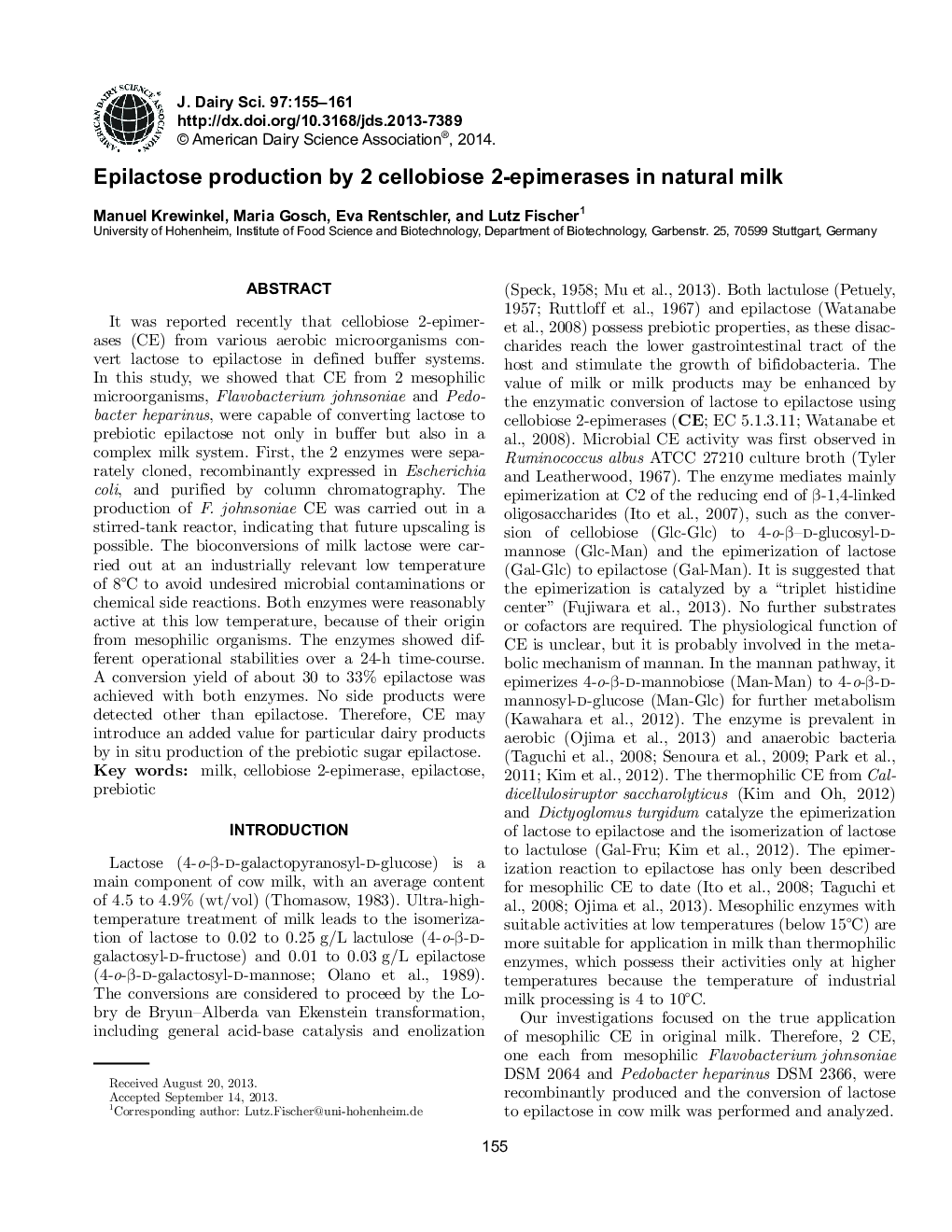| Article ID | Journal | Published Year | Pages | File Type |
|---|---|---|---|---|
| 10977696 | Journal of Dairy Science | 2014 | 7 Pages |
Abstract
It was reported recently that cellobiose 2-epimerases (CE) from various aerobic microorganisms convert lactose to epilactose in defined buffer systems. In this study, we showed that CE from 2 mesophilic microorganisms, Flavobacterium johnsoniae and Pedobacter heparinus, were capable of converting lactose to prebiotic epilactose not only in buffer but also in a complex milk system. First, the 2 enzymes were separately cloned, recombinantly expressed in Escherichia coli, and purified by column chromatography. The production of F. johnsoniae CE was carried out in a stirred-tank reactor, indicating that future upscaling is possible. The bioconversions of milk lactose were carried out at an industrially relevant low temperature of 8°C to avoid undesired microbial contaminations or chemical side reactions. Both enzymes were reasonably active at this low temperature, because of their origin from mesophilic organisms. The enzymes showed different operational stabilities over a 24-h time-course. A conversion yield of about 30 to 33% epilactose was achieved with both enzymes. No side products were detected other than epilactose. Therefore, CE may introduce an added value for particular dairy products by in situ production of the prebiotic sugar epilactose.
Related Topics
Life Sciences
Agricultural and Biological Sciences
Animal Science and Zoology
Authors
Manuel Krewinkel, Maria Gosch, Eva Rentschler, Lutz Fischer,
